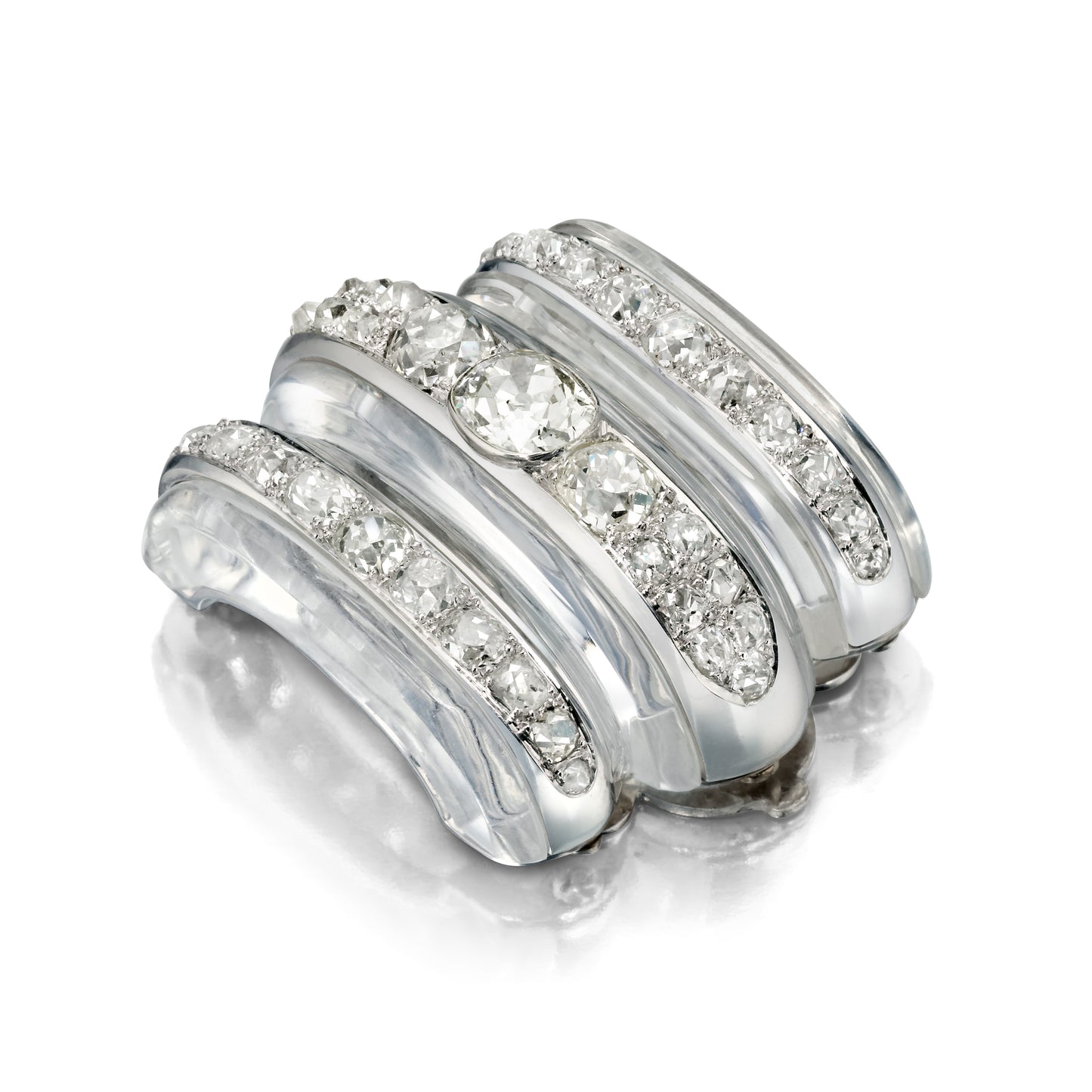ART MODERNE ROCK CRYSTAL AND DIAMOND CLIP BY SUZANNE BELPERRON FOR RENÉ BOIVIN, PARIS, 1935
ART MODERNE ROCK CRYSTAL AND DIAMOND CLIP BY SUZANNE BELPERRON FOR RENÉ BOIVIN, PARIS, 1935
SOLD
An arched clip of fluted rock crystal set with lines of diamonds; mounted in gold and platinum with French assay marks
- 39 mixed-cut diamonds, total weight approximately 7 carats
- Maker’s mark for René Boivin
- Measurements: 1 7/16 × 1 1/8 × 3/4 inches
Additional cataloguing
Certification
- Certificate of Authenticity from Françoise Cailles, dated November 27, 2006, stating that the brooch is René Boivin, 1935, from a design by Suzanne Belperron.
Literature
- cf. Cailles, Françoise. René Boivin: Joaillier. Paris: Quartet Books, 1994, pp. 117 and 198 (drawings).
- cf. Vogue, “Sets Come Back,” May 1, 1934, p. 48.
Biography
René Boivin founded his company in the 1890s. After his death in 1917, his wife, Jeanne Boivin—the sister of fashion designer Paul Poiret—presided over the firm. Assisted by her daughter Germaine and designers Suzanne Belperron and Juliette Moutard, Jeanne oversaw production of some of the most inspired jewelry of the twentieth century. The house is known for pieces with a strong, sculptural style as well as designs based on nature. After Jeanne’s death in 1959, Germaine Boivin and Juliette Moutard ran the company until it was sold in the 1970s.
Significance
Along with Chanel and Schiaparelli, Suzanne Belperron was one of the innovators of modern dress and jewelry. Belperron began her career in 1919 designing for René Boivin, a rare and progressive example of a fine jewelry house owned and directed by a woman. Jeanne pioneered the modern movement and hired talented female designers Juliette Moutard and Suzanne Belperron to help her redefine the company’s aesthetic. They created an unusual and distinct style of jewels that were highly sculptural with rounded edges and bold colors inspired by both nature and technology.
This iconic clip designed by Belperron is an unusual example of one of the final pieces she created for Boivin before leaving to form a partnership with Bernard Herz in 1933. The piece is so thoroughly Belperron that after she left Boivin, she went on to create her own versions of the brooch, which appeared in Vogue in 1934. In a photo by Horst, Belperron wears a similar fluted rock crystal brooch, and a chalcedony version studded with diamonds appears in “Sets Come Back.” This rock crystal variation is the most sumptuous, set with lines of diamonds down the tops of each curve. This exquisite clip brooch is one of the first iconic examples of Belperron’s work and demonstrates the important influence Jeanne Boivin had on her oeuvre.
Stripping away any assumptions about the delicacy of jewelry design, Suzanne Belperron and Jeanne Boivin created some of the most innovative jewels of the twentieth century. Leaders in modern design, their jewels are bold in form, playful in use of material, and fluid in look and feel. The dramatic image by Horst P. Horst featuring Belperron wearing similar brooch shows the impact of this form when worn. Clipped asymmetrically to the V-neck of a sleeveless sheath, the sweeping curves of the brooch create a dramatic line to attract the eye. This clip brooch is just as stunning when worn today.







